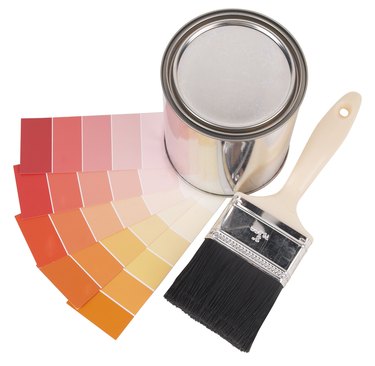Things You'll Need
Brush with soft, 2-inch bristles
Paint
Thinner
Fine-grained sand paper

Gloss paint produces a shiny glass-like finish for furniture and woodwork which is highly light-reflective, magnifying imperfections such as brush strokes. Applying gloss paint with a brush requires a few simple guidelines to avoid the appearance of brush strokes in the finish. Properly loading paint on a high-quality brush and applying it in two or three thin coats will assure smooth coverage without the offending bristle tracks which can ruin the appearance of a gloss paint project. If necessary, dilute the paint with the manufacturer's recommended thinner to give the paint a smooth, easy flow.
Step 1
Load the paint on the brush; dipping the lower third of the bristles into the paint.
Video of the Day
Step 2
Remove the brush from the paint, lightly brushing the back side of the bristles against the rim of the paint can to remove some, but not all, of the excess paint.
Step 3
Apply a thin coat of paint to the surface with long, even strokes. Allow the paint to dry completely.
Step 4
Sand the dry paint with very fine-grained sand paper, if necessary, to remove any slight brush marks.
Step 5
Apply a second thin coat of paint and allow to dry completely as in Step 3. Sand lightly again, if necessary.
Step 6
Apply a third coat and allow to dry completely for a perfect gloss finish.
Tip
Invest in a good brush. The brush bristles should feel soft and be a minimum of 2 inches in length. Be sure each coat of gloss is completely dry before you apply more paint.
Warning
Use slow-drying paint to allow the paint to spread and flatten as it dries. Quick-drying gloss paint shows brush marks.
Video of the Day